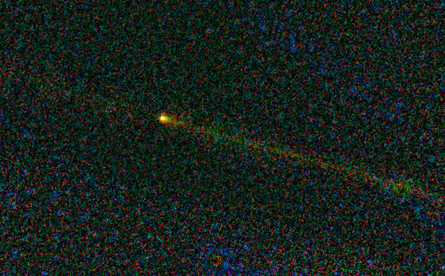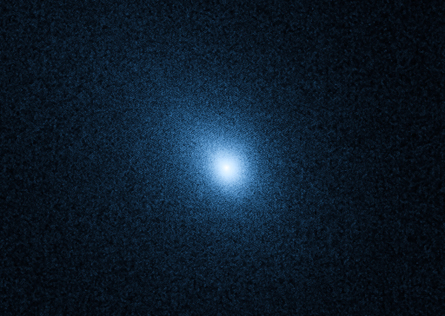A comet’s tail
Hartley 2 will pass nearest Earth October 20
Comet Hartley 2 is already producing quite a tail and is expected to put on an even better light show when it nears Earth and the sun in late October. But the best look at the comet will come November 4, when a NASA spacecraft will fly within 700 kilometers of the icy object.


Hartley 2, formally known as 103P/Hartley, circles the sun every 6.46 years. The comet comes within 17.7 million kilometers of Earth, or about 45 times the Earth-moon distance, on October 20. From dark skies in the Northern Hemisphere, the comet should be visible to the naked eye as a fuzzy object in the constellation Auriga. Binoculars or a small telescope may be required to see Hartley 2 from urban areas. The comet, discovered in 1986, makes its closest approach to the sun on October 28. Observers in the Southern Hemisphere should have a good view of the comet in late November as it heads away from Earth.
Hubble Space Telescope images of the comet, taken September 25, show that the body’s solid core has a diameter of about 1.5 kilometers, consistent with previous estimates. Although Hartley 2 is in a highly active state as it nears the sun’s warming rays, the Hubble images reveal that the comet’s coma, or cloud of gas and dust, is unusually uniform. The images show no evidence of jets of material suddenly erupting from the body, as is often seen in comets such as Hartley 2 that have short orbital periods.
NASA’s Wide-field Infrared Survey Explorer caught a glimpse of the comet on May 10. In combination with close-up visible-light images being taken by NASA’s EPOXI mission, which will rendezvous with Hartley 2 on November 4, the infrared views will document how the comet has changed over time. The May images capture the most extensive view of Hartley 2’s dust tail, the debris left by the comet during its repeated journeys around the sun.
NASA released the images taken by Hubble and the Wide-field Infrared Survey Explorer on October 5.







